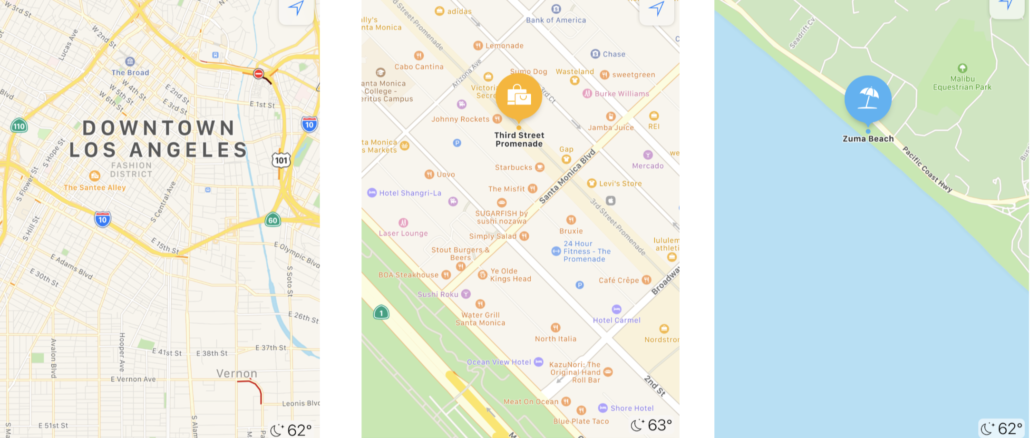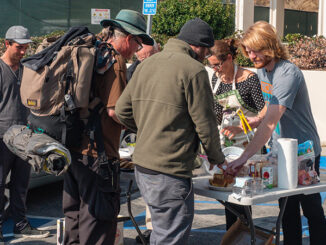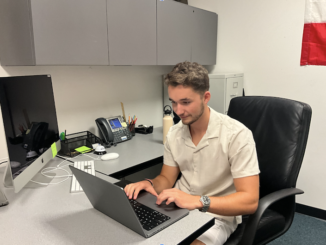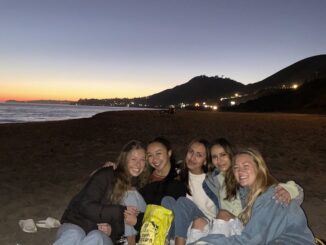
Pepperdine University is located 10 minutes away from some of the most beautiful beaches in Southern California and 45 minutes from the second most populated city in the United States.
For students who don’t have a car, getting to those locations is either a really expensive Uber/Lyft ride or a long wait for the bus.
“The worst thing about Pepperdine is that it’s such a secluded campus and if you don’t have a car, you are kind of stuck within a 5-mile radius,” junior art history major Lydia Parker said. “It makes you feel disconnected from those who do have cars, especially when you’re not close to people who do.”
A Pepp Post survey of 56 students found that 24 didn’t have cars, making them feel trapped and bored on campus. Students in interviews said they wished administrators better communicated what alternative options there were and how important a car was to have on campus.
Getting around Malibu
The Office of Admissions gives all students, regardless of their year, the option to have their car on campus. On-campus parking is free with an approved permit. Admissions Director Falone Serna said there are ways to get around for those who choose not to bring their cars on campus.
Doug Hurley, the associate dean of Students, who oversees New Student Orientation, said freshmen are notified of their options and given a checklist on public safety. The checklist provides details on how to obtain a permit for their car.
“The message there is if you have a car, need a car, want a car, this is how you have a car on campus,”Hurley said. “We try to avoid the qualitative aspect of it’s good or bad to have a car.”
Some first-year students arrive at Pepperdine with advice they received from others.
“I was told that most of the kids had cars on campus, that you’re going to find someone that has a car,” sophomore business major Billy Thorpe said. “But then you realize that all those kids have lives too and have jobs that they have to go do. So when you’re not with them, you’re kind of stuck on your own.”
Apart from carpooling and borrowing a friend’s car, the majority of surveyed students report using ride-hailing services like Uber and Lyft. Twenty-six students reported paying more than $30 for a one-way ride.
“So getting into Los Angeles for Uber is around $40 from Malibu,” Thorpe said. “That’s just to get in. Then to get back, it’s another $40, so it’s $80 round trip.”
According to the poll, students are more inclined to go off campus during the weekends and pay these high prices. Some 23 students reported feeling stuck without cars.
Of the 24 students who don’t have their cars on campus, 22 wish they did so they could go anywhere they want without having to rely on others.
“There’s not a lot of things to do on the weekends,” junior math major Hayden KollerBohm said. “It’s definitely convenient.”
Although carpooling was one of the highest-ranking ways of getting around Malibu, 19 of 34 students who do have cars on campus said they sometimes feel pressured into offering rides to friends.
Places Pepperdine students go
The top four places students go to using Uber and Lyft are the airport, Santa Monica, Downtown Los Angeles and the beach. Considering Pepperdine’s location, these results aren’t surprising.
A few other locations are through the canyon to visit friends and to visit Calabasas.
Importance of traveling off campus
According to Forbes, traveling and exploring is good for one’s mental health and helps release any built up stress. It also boosts overall happiness and satisfaction.
“If I’m having a mental health day or just not feeling it or like if I have to go to the grocery store, it’s right there,” said, Ashley Barron, a junior psychology and sociology double major. “I can walk up to Rho and drive down and be back in five minutes. I don’t have to wait for the shopping shuttle that’s on campus or text a bunch of my friends asking if they’re free.”
Pepperdine’s efforts to accommodate students without cars
Poll results showed that 26 students don’t think that Pepperdine is doing enough to accommodate students who don’t have cars on campus.
“The university has ways for students to get around without a car,” Serna said. “There are Zipcars available on campus but there are costs associated with that. There are shuttles that take students down to the center where Ralphs and CVS are located. I have also been told that RAs and RDs can give students rides, particularly if there is an emergency situation.”
Pepperdine has four Zipcars available on campus at $8.50 an hour but poll results show that Zipcar is one of the least used forms of transportation. Only five of 55 students reported that they use Zipcar.
“It’s a huge struggle no doubt,” Hurley said. “You really can’t walk anywhere. You really don’t want to walk down to Ralphs because it’s too hard, too busy and dangerous. Walking back up is a pain.”
Although Pepperdine currently offers a shuttle service to the Malibu Country Mart and Ralphs, there continues to be restrictions with this source of transportation.
“I know there is the shopping shuttle but maybe make it more frequent,” said Moriah Hall, a junior sports medicine major. “I took it once or twice freshman year but the hours didn’t really work out with my schedule.”
Of the 56 students polled, 44 said they don’t use the shopping shuttle service and 36 suggested that shuttles should offer different locations.
Imagining life with a car
Having to rely on mass transit and Zipcar makes exploring Malibu difficult for students who wish to see what surrounds Pepperdine.
“It definitely would have been a lot easier to get off campus and I would have explored Malibu a lot more cause I don’t really know much about Malibu itself,” said Lauren Bollinger, junior integrated marketing communication major.
Parker said she would be more willing to go out and would have hung out with friends more.
“I stayed to myself a lot more because I wasn’t willing to ask people I wasn’t close with to take me somewhere because that felt kind of awkward,” she said.
Hall said she would experience a lot more freedom if she had a car on campus.
“If I want to go to the beach, or if I want to go to the store, I don’t have to ask people,” Hall said. “That was a big thing freshman year. I felt bad asking people.”
Solutions for the problem
Last year Mariela Toledo, the executive vice president of the Student Government Association, proposed a resolution for shuttle funding to take students to LAX for winter break. As a result, SGA has set aside funding for shuttles to go to and from LAX for Christmas and Thanksgiving break.
“The point of the resolution is to voice whatever concerns the campus needs,” Toledo said. “The template is actually on the SGA page and anyone can submit a resolution, it doesn’t just have to be someone in SGA. If you’re a student, and you have a very strong concern, you can get the format from our website and it basically tells you how to fill it in.”
Student-filled resolutions students serve as “proof to the administration” that there is student need for a particular proposal.
“We do get resolutions mostly from other organizations that need partnership from SGA,” Toledo said.
Resolutions are a possible outlet students can use to get what they need from Pepperdine. It’s also the first step in asking for funding for a project.
While some students propose that Pepperdine should help students reach popular locations with the use of shuttles, other students said better advertising the services they currently do provide would also help.
“If you don’t have car, there’s plenty of options as we’ve been discussing,” Hurley said. “We need to let students know better about them. I think they’re pretty affordable, I know the shuttle is free, but then again, do people know about that?”
Hurley suggested a variety of ways in which Pepperdine could advertise the options available.
“SGA could help getting the word out on their social media and during their town hall meetings,” he said. “We do tell freshman during NSO but I get it, NSO is pummeling you with a lot of information. DPS could do something you could just table out in the plaza. There needs to be more creative ways to let students know, ‘hey if you don’t have a car, here’s what you could do.’”
Karina Iturralde completed the reporting for this story under the supervision of Dr. Christina Littlefield and Dr. Theresa de los Santos in Jour 241 in fall 2018. Dr. Littlefield supervised the web story.




